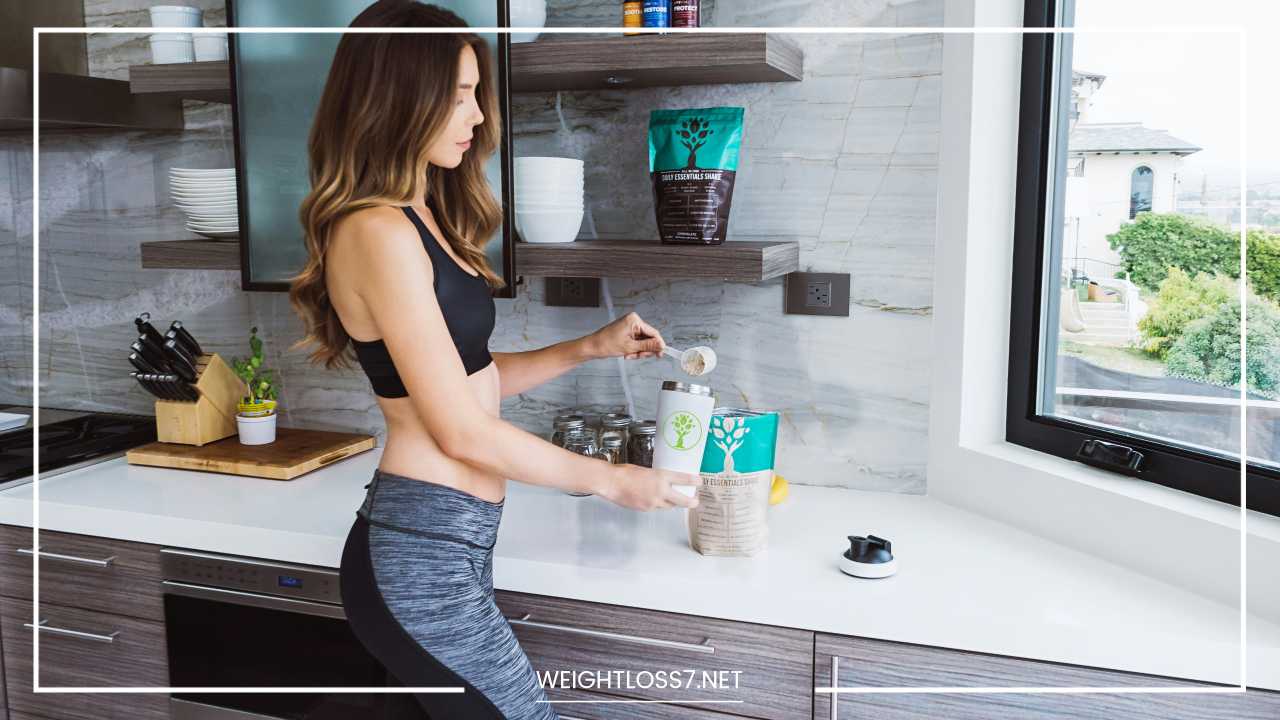Healthy Living Journey: Food, Movement, Mind & Rest

Healthy Living
Healthy Living: A Journey, Not a Destination
Healthy living. It’s a term so ubiquitous it can feel like white noise. But beneath the surface lies a powerful truth: taking care of ourselves is the bedrock of a fulfilling life.
It’s not a race to some unattainable finish line, but rather a continuous journey of self-discovery and well-being.
This post is your personalized roadmap, packed with practical tips and insights to navigate the exciting (and sometimes challenging) path of healthy living. We’ll delve into four key pillars:
- Nourishment: Fueling your body with the symphony of whole foods
- Movement: Keeping your body strong and vibrant through joyful activity
- Mindfulness: Cultivating mental well-being and emotional resilience
- Rest: Recharging your batteries for optimal function
Nourishment: The Symphony of Whole Foods
Food is more than just sustenance; it’s an orchestra of information that your body uses to build itself, repair damage, and generate energy. So, what kind of melody are you feeding it? Here’s how to craft a symphony of delicious and healthy choices:
-
Embrace the Rainbow: Fruits and vegetables are the colorful stars of your plate. They’re packed with essential vitamins, minerals, and fiber that keep your body functioning optimally. Explore the vibrant world of farmers markets, or join a Community Supported Agriculture (CSA) program to access fresh, seasonal produce.
-
Whole Grains: The Base of the Melody: Whole grains like brown rice, quinoa, oats, and whole-wheat bread are the melody’s base, providing sustained energy and essential dietary fiber. Ditch the refined white varieties that leave you feeling sluggish and can contribute to blood sugar spikes.
-
Lean Protein: The Harmony of Building Blocks: Protein is the foundation for building and repairing tissues. Choose lean protein sources like chicken breast, fish, beans, lentils, and tofu. Aim for variety to ensure you’re getting a complete spectrum of amino acids, the building blocks of protein.
-
Healthy Fats: The Essential Notes: Don’t fear fat! Healthy fats like avocado, nuts, seeds, and olive oil are crucial for brain function, hormone production, and nutrient absorption. Opt for these over unhealthy saturated and trans fats commonly found in processed foods. Here’s a tip: drizzle olive oil on roasted vegetables to enhance their flavor and add a healthy fat boost.
-
Hydration: The Flowing Rhythm: Water is the lifeblood of your body. It keeps your system functioning smoothly, flushes toxins, and regulates body temperature. Aim for eight glasses of water a day, and adjust based on your activity level and climate. Infuse your water with slices of fruit or cucumber for a refreshing twist.
-
Spice Up Your Life: Spices and herbs not only add flavor but also boast a range of health benefits. Turmeric, for instance, has anti-inflammatory properties, while ginger can aid digestion. Explore different spices and herbs to add flavor and complexity to your meals without relying on unhealthy salts and sugars.
Nourishment Beyond the Plate:
-
Read Food Labels: Become a savvy food label detective. Understand serving sizes, and be mindful of added sugars, sodium, and unhealthy fats. Choose products with minimal processing and a shorter list of ingredients.
-
Plan Your Meals: Planning can be a lifesaver. Take some time on the weekend to plan your meals for the week. This will help you avoid unhealthy impulse purchases and ensure you have healthy options readily available.
-
Cook More at Home: Cooking at home gives you control over the ingredients and portion sizes. Experiment with new recipes, discover cuisines from around the world, and make cooking a fun and social activity.
-
Mindful Eating: Slow down and savor your food. Pay attention to your body’s hunger and fullness cues. Avoid distractions like TV or your phone while eating. This mindful approach helps you appreciate the flavors of your food and avoid overeating.
Movement: Your Body’s Symphony of Motion
Movement isn’t just about aesthetics; it’s about celebrating what your body can do. It’s about finding the rhythm that moves you and keeps your body strong and vibrant. Here’s how to get your body moving in a healthy and enjoyable way:
-
Find Activities You Love: The key to sticking with exercise is making it something you genuinely look forward to. Whether it’s dancing to your favorite tunes, a brisk walk in nature, swimming laps in the pool, or joining a team sport, find activities that spark joy and ignite your inner athlete.
-
Start Small and Build Up: Don’t try to go from couch potato to marathon runner overnight. Begin with manageable routines like a 15-minute walk each day and gradually increase intensity and duration as your fitness level improves. Consistency is more important than intensity, so aim for at least 30 minutes of moderate-intensity exercise most days of the week.
-
Consistency is Key: Aim for at least 30 minutes of moderate-intensity exercise most days of the week. Consistency is more important than intensity, so find a routine that fits your lifestyle and stick to it.
-
Embrace Strength Training: Don’t underestimate the power of strength training. Building muscle mass boosts metabolism, improves bone health, and increases functional fitness for everyday activities. Bodyweight exercises like squats, lunges, and push-ups, resistance bands, or free weights are all fantastic options. You don’t need a gym membership to get started; your body weight can be a powerful tool.
-
Listen to Your Body: Pushing yourself is good, but so is knowing your limits. Rest when your body needs it, and don’t ignore pain. Pay attention to your body’s signals and adjust your workout routine accordingly. If you’re new to exercise, consult a doctor or certified personal trainer to create a safe and effective program.
-
Movement Beyond Exercise: Move throughout your day! Take the stairs instead of the elevator, get a standing desk, or park further away and walk. These small changes add up and make a big difference. Take active breaks during your workday – do some stretches, go for a short walk, or try a few jumping jacks.
-
Find an Exercise Buddy: Having an exercise buddy can increase accountability and make workouts more fun. Partner up with a friend or family member for walks, bike rides, or group fitness classes.
-
Embrace the Outdoors: Exercise doesn’t have to be confined to a gym. Get active in nature! Go for a hike, explore a new park, or try paddleboarding on a lake. Immersing yourself in nature adds another dimension to your workout and can boost your mood and reduce stress.
Mindfulness: Cultivating Inner Harmony
Your mind plays a crucial role in your overall well-being. Just like tuning an instrument, here are some ways to nurture your mental health and cultivate inner peace:
-
Mindfulness Practices: Meditation, yoga, and deep breathing exercises are powerful tools for managing stress, improving focus, and increasing self-awareness. Even a few minutes a day can make a significant difference. There are many mindfulness apps and online resources available to help you get started.
-
Challenge Negative Thoughts: We all have negative self-talk sometimes. But don’t let it take control. Practice cognitive reframing – challenge negative thoughts and replace them with more positive, realistic ones. Instead of thinking “I’m so bad at this,” try “This is challenging, but I’m learning and getting better every day.”
-
Gratitude is an Attitude: Focusing on what you’re grateful for can significantly improve your mood and overall well-being. Take some time each day, whether silently or by journaling, to appreciate the good things in your life, big or small. This practice shifts your focus from what you lack to what you have, fostering a sense of contentment and positivity.
-
Prioritize Quality Sleep: Sleep is essential for both physical and mental health. When you’re well-rested, you can better manage stress, focus more clearly, and make healthier choices. Aim for 7-8 hours of quality sleep each night. Create a relaxing bedtime routine that includes winding down with a book, taking a warm bath, or practicing light stretches.
-
Connect with Loved Ones: Social connection is a fundamental human need. Surround yourself with positive, supportive people who make you feel good. Nurture your relationships with family and friends, and don’t be afraid to reach out for help when you need it.
-
Digital Detox: In today’s hyper-connected world, it’s crucial to take breaks from technology. Set boundaries for yourself – turn off notifications, avoid screens before bed, and schedule tech-free times during the day. This allows you to be more present in the moment and reduce stress levels.
-
Help Others: Helping others is a powerful way to boost your own well-being. Volunteer for a cause you care about, help a neighbor in need, or simply offer a kind word to someone who seems down. Contributing to your community fosters a sense of purpose and connection.
Rest: Recharging Your Batteries
Just like any electronic device, your body needs time to recharge. Here’s how to prioritize rest for optimal function:
-
Quality Sleep: We’ve already touched on the importance of quality sleep. Aim for 7-8 hours of uninterrupted sleep each night. Create a sleep-conducive environment – keep your bedroom dark, cool, and quiet, and avoid stimulants like caffeine and alcohol before bed.
-
Naps: Short naps can be a powerful tool for recharging your batteries. Aim for 20-30 minute naps to avoid feeling groggy upon waking. Schedule naps strategically to avoid interfering with nighttime sleep.
-
Relaxation Techniques: Incorporate relaxation techniques into your daily routine. Deep breathing exercises, progressive muscle relaxation, and mindfulness meditation can all help to calm your mind and body, promoting feelings of peace and well-being.
-
Schedule Downtime: Just like you schedule work meetings and appointments, schedule downtime for relaxation and self-care. This could involve reading a book, taking a relaxing bath, spending time in nature, or simply doing nothing at all.
-
Listen to Your Body: Pay attention to your body’s signals. If you’re feeling constantly tired, achy, or stressed, it’s a sign you need more rest. Don’t be afraid to say no to extra commitments and prioritize activities that help you recharge.
-
Rest Doesn’t Have to be Passive: Rest can be both physical and mental. While getting enough sleep and taking breaks is crucial, rest can also involve activities you enjoy. Take a leisurely walk, listen to calming music, or spend time pursuing a hobby.
Living a Healthy Life: A Journey, Not a Destination
Healthy living isn’t about achieving some unrealistic ideal or following a fad diet. It’s about making sustainable changes that fit your lifestyle and preferences.
It’s about creating a healthy relationship with food, movement, your mind, and rest.
Embrace Imperfections: There will be days when you oversleep, miss a workout, or indulge in a slice of cake. Don’t beat yourself up! The key is to get back on track and focus on progress, not perfection.
Celebrate Small Wins: Acknowledge and celebrate your progress, no matter how small. Did you try a new vegetable? Did you manage a 10-minute walk during your lunch break? Did you finally get to bed at a decent hour? These small wins add up and keep you motivated on your journey.
Find Your Inspiration: Surround yourself with positive influences. Follow inspiring health and wellness blogs or social media accounts. Read books or articles about healthy living. Find a community that supports your goals.
Healthy Living is a Lifelong Journey: Remember, healthy living is a marathon, not a sprint. It’s a continuous process of learning, adapting, and making choices that support your overall well-being. Enjoy the journey, embrace the challenges, and celebrate the victories.
By incorporating these tips into your life, you can embark on a path of healthy living that nourishes your body, strengthens your mind, and fosters a sense of peace and well-being. You deserve to live a healthy and fulfilling life – take charge and make it happen!

















